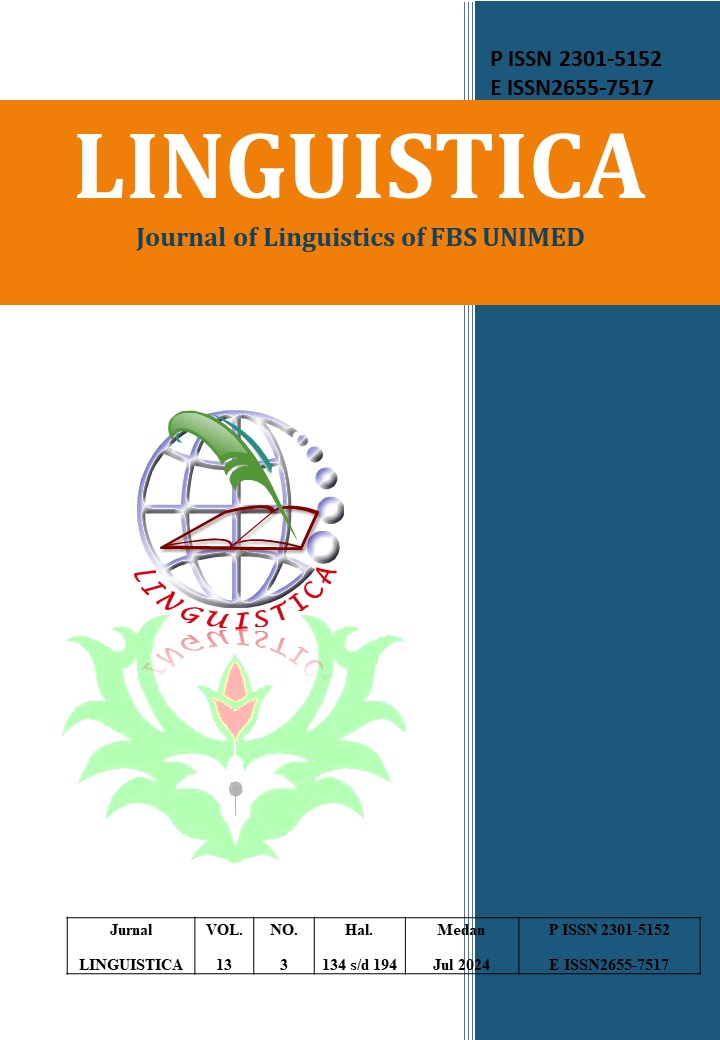AN ANALYSIS OF EFL STUDENTS™ SPEAKING ANXIETY (A CASE STUDY AT PABUARAN 1 JUNIOR HIGH SCHOOL IN BANTEN)
DOI:
https://doi.org/10.24114/jalu.v13i3.62119Abstract
Studies show that speaking anxiety is a common challenge for many students of English as a Foreign Language (EFL). Therefore, this research was conducted to explore levels of speaking anxiety, factors contributing to students' anxiety, and coping strategies. Utilizing a qualitative approach with a case study design focuses on 36 eighth-grade students at SMPN 1 Pabuaran. Instruments include a close-ended questionnaire, semi-structured interview, and observational sheet, complemented by data-collecting techniques such as questionnaires, interviews, observations, and documentation. The finding reveals that 3 participants (8%) indicated high anxiety, 16 participants (45%) indicated moderate anxiety, and 17 participants (47%) indicated low anxiety. Factors contributing to anxiety include personal and interpersonal anxieties, and classroom procedures. Students employ coping strategies such as preparation, relaxation, and positive thinking. It can be inferred that students are experiencing low levels of speaking anxiety, with two main factors including personal and interpersonal anxieties and classroom procedures. The strategies employed can serve as a reference for other students in managing their anxiety and improving their speaking skills.Downloads
Published
2024-07-31
Issue
Section
Articles
License
Copyright (c) 2024 SULISTYANINGSIH SULISTYANINGSIH, YUDI JUNIARDI, DINA RACHMAWATI

This work is licensed under a Creative Commons Attribution-ShareAlike 4.0 International License.
Authors who publish with this journal agree to the following terms:
- Authors retain copyright and grant the journal the right of first publication with the work simultaneously licensed under a Creative Commons Attribution License that allows others to share the work with an acknowledgment of the work's authorship and initial publication in this journal.
- Authors are able to enter into separate, additional contractual arrangements for the non-exclusive distribution of the journal's published version of the work (e.g., post it to an institutional repository or publish it in a book), with an acknowledgment of its initial publication in this journal.
- Authors are permitted and encouraged to post their work online (e.g., in institutional repositories or on their website) prior to and during the submission process, as it can lead to productive exchanges, as well as earlier and greater citation of published work (See The Effect of Open Access).
- This work is licensed under a Creative Commons Attribution-ShareAlike 4.0 International License.

